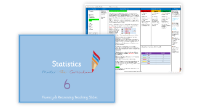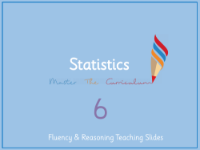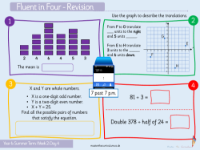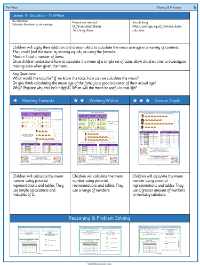Statistics - The Mean - Planning
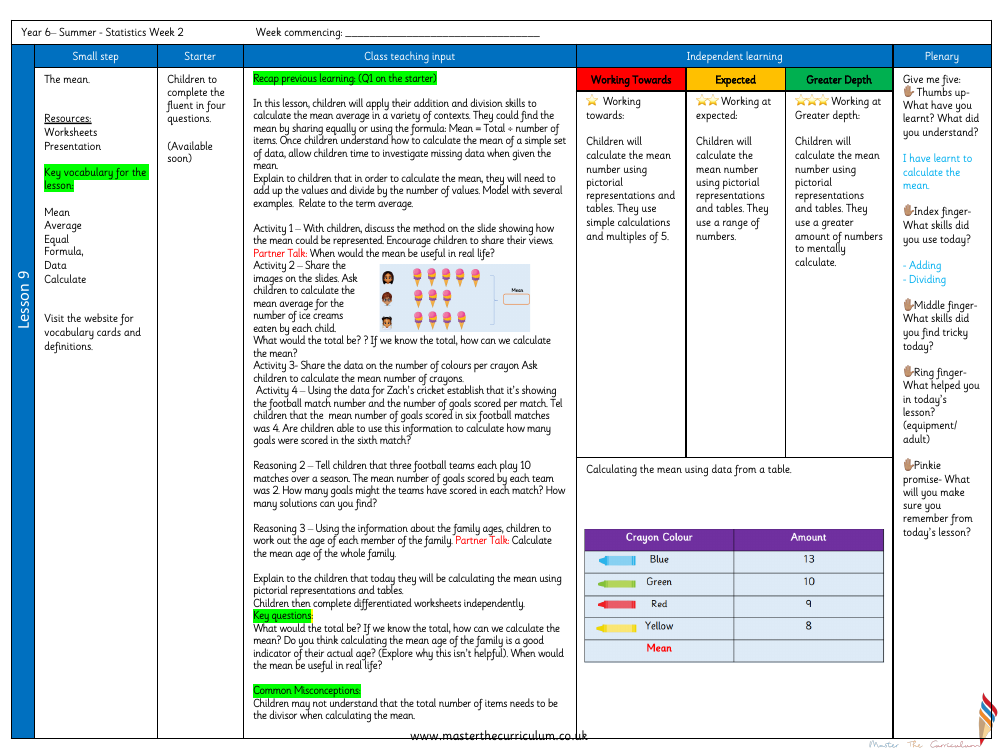
Maths Resource Description
Year 6 students are set to explore the concept of the mean, also known as the average, during their summer term statistics lessons. The session commences with a recap of previous learning, followed by class teaching input where children will apply their addition and division skills to calculate the mean average across various scenarios. They will learn that the mean can be found by adding all the values and dividing by the number of items, which can be expressed using the formula: Mean = Total ÷ number of items. The lesson aims to deepen their understanding of the mean through practical examples and discussions about its real-life applications. This is supported by resources such as worksheets and a presentation, and further reinforced by independent learning activities where students will practice calculating the mean in different contexts, including missing data problems.
Throughout the lesson, students will engage in a series of activities, starting with a discussion on the usefulness of the mean in real-life situations. They will work through examples such as calculating the mean number of ice creams eaten by children and the mean number of colours per crayon box. Another activity involves using data from a cricket match to determine the mean number of goals scored. The lesson also includes reasoning challenges where students are encouraged to think critically about the mean in the context of football matches and family ages. To consolidate their learning, children will complete differentiated worksheets that cater to various levels of understanding, from working towards expectations to achieving greater depth. The lesson concludes with reflection on what they've learned, the skills used, and how to overcome any difficulties encountered, with an emphasis on understanding the importance of using the correct divisor when calculating the mean to avoid common misconceptions.
